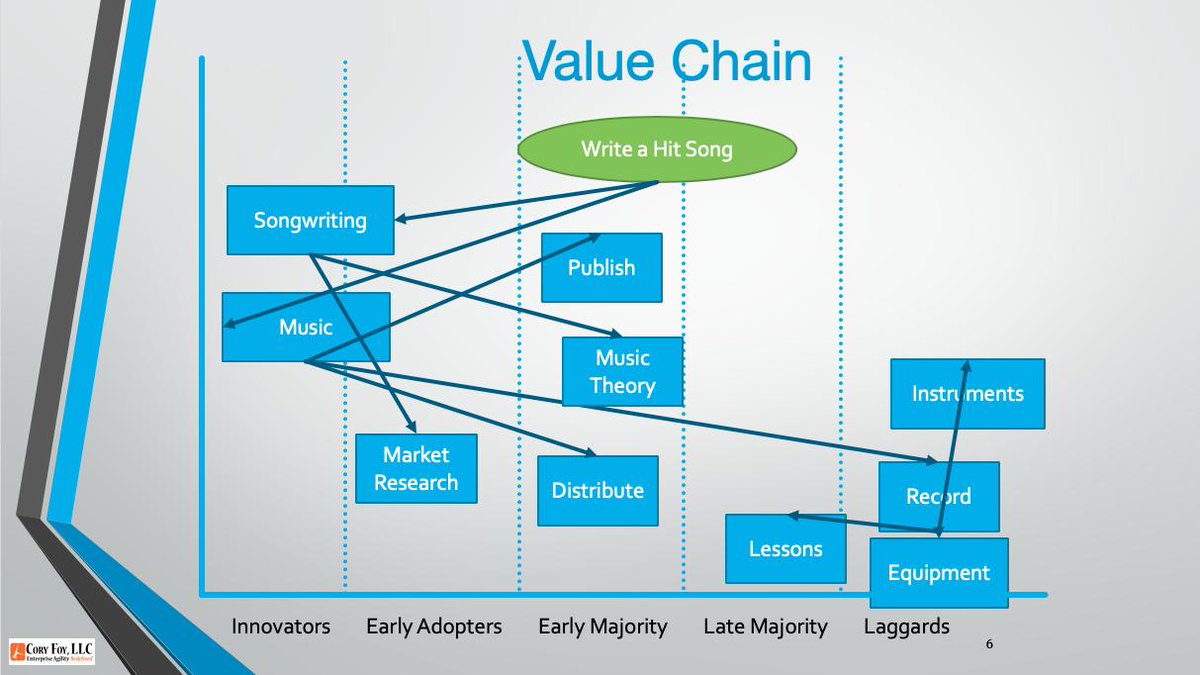Happy Mapping Monday! Today’s #mappingmondays video goes back to basics and covers the notion of looking at User Needs as well as constructing a Value Chain and ultimately turning it into a map by applying various aspects of motion and direction to the components. As always, the links in the video are below, and a full transcript is included below the video. And If you’re interested in finding out how to apply this to your organization, don’t hesitate to reach out via Twitter or email hello at coryfoy dot com!
Links:
- Simon’s Introduction to Value Chains
- The Opening Chapter of Simon’s Book
- Jeff Patton’s User Story Map
- The Dreyfus Model Experiment
- Geoffrey Moore’s Crossing the Chasm Book
Transcript:
Over the past couple of weeks we’ve talked about various Gameplay and Doctrine in relation to Wardley Mapping. But all of this makes a critical assumption – that our maps are solid. But we haven’t talked as much about what is in these maps or how they’re formed. So let’s touch on the core of building a map – the Value Chain.
In its simplest form, the value chain starts with a set of user needs and lists the components necessary to deliver those user needs – and the components necessary to deliver those components. As an example, let’s say I wanted to write a hit song. I’m going to need music and songwriting. And I’m also going to need a way to record, publish and distribute the music. For song writing I’m going to need a sense of musical theory, as well as research into what constitutes a hit song right now. We can go further and talk about instruments, lessons, recording equipment and many other components.
So far we have a graph of components connected to a single user need. Is this a map? No, not yet. One of the key distinctions Simon makes in his discussion about maps is that we need direction and movement to turn a graph into a map. The primary axes we see are component evolution from Genesis through Utility, and – less important – the visibility of the components. But do these have to be the only directional guidance? Not at all! We could try overlaying things like Roger’s Diffusion of Innovation Theory (made popular by Geoffrey Moore in Crossing the Chasm) and looking for components getting ready to “Cross the Chasmâ€. Or we could overlay the Dreyfus Model of Skills Acquisition to think about how we help our users progress in their knowledge of the components. The point is that we need directional capabilities for the components to understand how they’ll move in our space and where we can make plays at.
Speaking of users and their needs, we started with a single user with a single need. But often we have more than one user – or even differentiation between customers (people who buy our product) and users (people who use our product). They are going to have a variety of needs, and it’s worth mapping out those needs and the components necessary to look for overlaps and strategic advantages. Make a product compelling enough and your users can override the challenges in procurement and purchasing. Or make it easy enough to purchase or integrate and it might become a de facto standard even if the users don’t care for it.
But ultimately it’s important to have hypotheses and test them out with maps. If you think you have a strategic advantage, that advantage should be articulated on a map and obvious when it is. And then spend a little more time trying to poke holds in that obviousness.
If you’d like to learn more about Value Chain Mapping and User Needs Analysis, you can start with Simon’s seminal post on it as well as the chapter in his book. You can also look at some ideas from Jeff Patton and his User Story Map. And finally, check out both the Dreyfus Model of Skills Acquisition and Moore’s Crossing the Chasm. I’ve included the links here and will also post them in the blog post for this video.
And if you’re interested in learning more about applying mapping and strategy within your organization feel free to reach out on Twitter at @cory_foy or via email at hello at coryfoy dot com. And be sure to check out all of the Mapping Monday blogs posts on my site.
